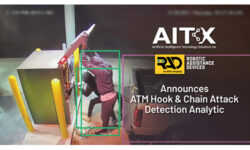The Biometrics Yo-Yo
The energy crisis is a real yo-yo. As a barrel of oil approaches $150, President Bush recommends lifting of the offshore drilling ban and Texas oilman T. Boone Pickens talks about wind and natural gas on network TV. Almost immediately, oil nose-dives to $125 a barrel. But what happens when the Congress refuses to lift the ban? Will it go up again?
The situation with biometrics is similar. After a long period of yo-yo market emergence — the ups from users wanting to replace cards and passwords, and the downs from tech admissions of less than perfect performance — the biometrics market continues to have appetite binges followed by burps of digestion. At this point, the binges seem to be winning.
Work Needed, But Promise Seen
After a lot of industry experience in certain applications, we can now conclude that biometrics are not perfect solutions. However, they don’t always have to be perfect since the vulnerabilities of cards  and passwords are fairly easy targets to conquer in the right user settings. Hand geometry systems work pretty well for outdoor access and automated fingerprint identification systems (AFIS) do the same in their applications.
and passwords are fairly easy targets to conquer in the right user settings. Hand geometry systems work pretty well for outdoor access and automated fingerprint identification systems (AFIS) do the same in their applications.
Voice, facial and vein applications, however, can present problems that can be pedestrian in nature, such as slowdowns in high user population throughput as well as higher-than-desired identity error rates. Yet biometric backers are still working to find that big application — the one that will demonstrate a big security user’s success in proving that biometrics are truly practical solutions to the accurate capture of human IDs without any reliance on back-up systems.
Where will these market applications arise? Will it be in a government setting, or a commercial high-value location?
The opportunities are considerable. In governmental circles, we have, at minimum, the need to identify every individual trying to enter the United States legally, know who is speaking to whom about policy and issues across the Internet, and protect our vast inventory of increasingly secure military and civilian assets. In the commercial market, there is private demand for the R&D, database, paper record and lab aspects of enterprise convergence. There is also a call for high level, scientific, financial and planning communications in large firms, as well as financial arbitrage, fiduciary transactions, corporate M&A and banking services.
Threats Spur Action
Will we ever see a biometrics replacement of old card readers on thousands of hotel doors, corporate entrances and engineering departments, or large stadium entrances to protect against a Tom Clancy-like disaster? Prior to the Cold War era, security planners needed evidence of a problem before taking steps to protect against a future recurrence. Now we have to act based on threats, not evidence, because some of the threats are so huge that no one wants to take the risk of inadequate protection.
Various estimates of the biometric market have been developed and taken everything into consideration, but we believe it all depends on the world’s current assortment of imputed threats.
If you enjoyed this article and want to receive more valuable industry content like this, click here to sign up for our FREE digital newsletters!

Security Is Our Business, Too
For professionals who recommend, buy and install all types of electronic security equipment, a free subscription to Commercial Integrator + Security Sales & Integration is like having a consultant on call. You’ll find an ideal balance of technology and business coverage, with installation tips and techniques for products and updates on how to add to your bottom line.
A FREE subscription to the top resource for security and integration industry will prove to be invaluable.







